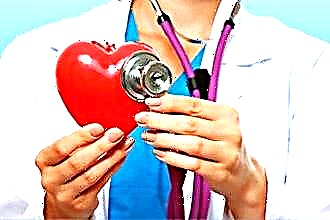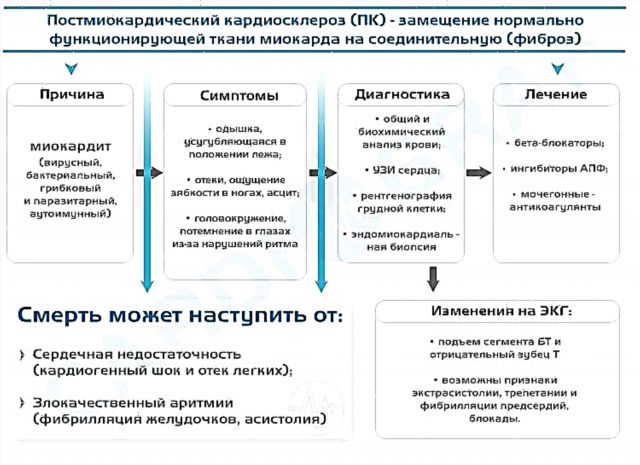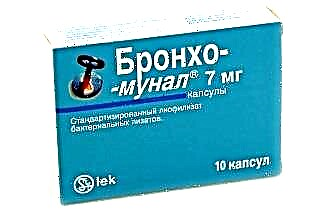Maxillary sinusitis is a complex inflammatory disease of the upper respiratory tract that affects the human air chambers. Depending on the spread of the pathogen, inflammation can cover one or both sinuses, but if the frontal sinuses are involved in the process, then such an ailment is called polysinusitis. Treatment of bilateral sinusitis requires an integrated approach and the use of various therapeutic techniques.
Causes and features of bilateral sinusitis
 The defeat of both accessory pockets of the nose can develop due to various reasons, among them the following are distinguished:
The defeat of both accessory pockets of the nose can develop due to various reasons, among them the following are distinguished:
- viral respiratory infections (ARVI);
- flu;
- rhinitis (vasomotor and allergic);
- spread of pathogenic infections from other affected organs of the nasopharynx (tonsils, adenoids);
- allergic reactions (seasonal and permanent).
Other causes, such as curvature of the nasal septum, trauma to the bones of the skull and overgrown polyps, are mainly the cause of unilateral sinusitis.
It is not uncommon for the pathological microflora to first occupy one sinus, and then spread to the other due to the anatomical features of the structure of the skull bones, late initiation of treatment or improper washing procedure. Treatment in adults and children of acute bilateral sinusitis should be carried out by a qualified otolaryngologist, since this type of ailment very often (in more than 10% of cases) turns into an intractable chronic form.
The acute form has pronounced signs, develops linearly and requires urgent medical intervention to prevent severe complications, among which the most dangerous can be:
- infection in the eye socket and deterioration of vision, sometimes to minimal values;
- acute otitis media as a result of the penetration of bacteria into the middle ear through the Eustachian tube;
- inflammation of the facial nerve, causing severe pain;
- damage to the heart muscle with a violation of its rhythm (myocarditis);
- intracranial complications (meningitis, sepsis, brain abscess);
- loss of the olfactory reflex due to the death of epithelial cells;
- damage to the osteotissue of the facial bones of the skull (osteoperiostitis).
The chronic form is characterized by an undulating course, when the symptoms either subside or worsen again, but the pathogen is present in the sinuses all the time. This can cause damage to the periosteum and skull bones, persistent dry cough, conjunctivitis, subfebrile body temperature, a noticeable decrease in academic performance and performance.
It is not easy to cure chronic sinusitis without a puncture, drug therapy can last for many months, and there is no guarantee of a complete cure.
Typical symptoms of bilateral sinusitis
Considering that the inflammatory process covers both maxillary sinuses, its manifestations are usually pronounced. You can recognize bilateral sinusitis by the following signs:
- Simultaneous congestion of both nasal passages and severe difficulty in breathing through the nose, the patient is forced to breathe through the mouth, which leads to drying out of the mucous membranes. Unilateral sinusitis is characterized by alternating congestion.
- Congestion often leads to a loss of smell, in which even strong odors are not felt.
- Nasal discharge can be different: transparent, liquid and not numerous at the initial stage, yellow-green and thick in the presence of bacterial microflora in the accessory pockets.
- Changes in the timbre of the voice, which becomes low and deaf, a nasal tone is clearly heard due to the exclusion of the air sinuses from the sound formation process.
- Pain sensations are localized on both sides of the nose. First, there is a feeling of squeezing or bursting, aggravated by turning the head, bending over and abrupt movements. Then pain syndrome manifests itself, which can cover the entire head or shoot into individual organs (neck, teeth, ear, temple).
- The presence of pus in the cavities causes a rise in temperature up to 38-39 degrees and intoxication of the body, which is expressed in weakness, chills, muscle pain, rapid fatigue.
Symptoms may vary slightly depending on the stage of the disease:
- Catarrhal sinusitis is a complication of a viral infection, the mucous membrane is not deeply affected, the discharge is liquid and transparent;
- Serous is characterized by abundant watery secretions, of which there are so many that the cilia of the ciliated epithelium do not have time to remove them. In this situation, the sinuses are vulnerable, therefore bacterial microflora often joins the viral agents.
- Purulent is the result of the multiplication of pathogenic bacteria in the sinuses and the accumulation of purulent exudate in them with a parallel increase in tissue edema.
- Polyposis is usually chronic in nature and is caused by the growth of cysts and polyps in the nasal cavity, which worsens the outflow of mucus.
In any case, in the presence of these symptoms, it is necessary to go to the hospital as soon as possible in order to establish an accurate diagnosis and timely start treatment.
Diagnosis of the disease
 A qualified otolaryngologist can accurately determine the ailment, its stage and causes of occurrence after performing a number of diagnostic studies:
A qualified otolaryngologist can accurately determine the ailment, its stage and causes of occurrence after performing a number of diagnostic studies:
- during an external examination, an experienced doctor will immediately pay attention to swelling of the cheeks on the sides of the nasal slopes, redness of the eyes, lacrimation and snot;
- palpation will confirm the tenderness of the zygomatic regions on both sides of the face;
- visual examination of the nasal cavity using a rhinoscope or endoscope will show hyperemia and swelling of the mucous membranes, narrowing of both anastomoses;
- sometimes the doctor can use a Hering lamp, which is inserted into the patient's mouth to show the bones of the skull and sinus walls;
- The most objective picture is given by an X-ray, on which the horizontal level of secretion in the accessory chambers or a strong thickening of the parietal mucous membranes will be clearly visible;
- Pregnant women are not allowed to have X-rays, so 2D B-mode ultrasound can be used;
- occasionally it is necessary to do a puncture and take a sample of exudate for analysis if standard diagnostic methods do not make it possible to draw an unambiguous conclusion.
If a diagnosis of bilateral sinusitis is made, treatment is developed based on the severity of the symptoms, the age of the patient and his tolerance of certain medications and procedures. In babies up to 3-4 years of age, the maxillary sinuses are just forming, so sinusitis is less common, but in later childhood and adolescence its frequency is higher than in adults.
Drug treatment of bilateral sinusitis
Before treating bilateral sinusitis, it is necessary to consult with an experienced otolaryngologist which methods of therapy should be used to achieve the best result. Often, patients are afraid of surgery, ask doctors if it is possible to cure the disease without a puncture, and ask them to draw up a drug treatment regimen. If all the requirements of the doctor are fulfilled, taking into account the development of modern pharmacological science, in many cases a complete cure can be achieved without resorting to puncture. In conservative therapy, the use of drugs of different directions is practiced.
Antibiotics are prescribed necessarily if there is a bacterial microflora or a purulent process proceeds.Ideally, you need to take a nasal swab and sow it in a bacteriological laboratory in order to accurately identify the bacteria that infect the organs and prescribe the desired drug. However, in most cases, in order not to waste time, the doctor prescribes antibiotics that affect the largest possible number of bacteria, and then, in the course of treatment, adjusts the regimen if necessary.
 For systemic antibiotic therapy, drugs are chosen from the following groups of antibiotics:
For systemic antibiotic therapy, drugs are chosen from the following groups of antibiotics:
- Macrolides (Rovamycin, Erythromycin, Azitrox, Clarithromycin) can be used for the treatment of both acute and chronic forms of the disease, the difference is only in the dosage.
- Protected penicillins (Flemoxin solutab, Amoxiclav) show high efficiency. However, in some regions, there may be an increased resistance of pathogens to them.
- Cephalosporins of the third and fourth generation (Ceftriaxone, Cefodox, Cephalexin).
- Betalactam products based on clavulanic acid (Augmentin).
- Fluoroquinolones (Ciprofloxacin, Ofloxacin) are drugs similar to antibiotics with a strong antimicrobial effect, but they have no analogues in nature.
Most often, antibiotics are taken orally in the form of tablets or suspensions (for children), however, in case of a severe course of the disease, the injection method of administration is more often used.
Bioparox, Isofra and Polydex are used locally. The treatment regimen with systemic antibacterial drugs should not be changed or interrupted independently in order to avoid chronicity of the disease or the development of resistance of the pathogen to this drug.
Decongestants (alpha-adrenergic agonists) have a local constricting effect on the vessels that penetrate the tissues of the nasal cavity. Thanks to this, it is possible to reduce tissue edema and ensure the passage of air into the lower respiratory tract and accessory pockets. The duration of their effect depends on the active substance of a particular drug and can vary from 2 to 12 hours.
The choice of vasoconstrictor aerosols and drops in pharmacies is very large, among the most famous are Tizin, Sanorin, Nazol, Rinostop, Otrivin. It is undesirable to use them uncontrollably, since after 1-2 weeks the development of addiction and bleeding from the nose is possible. To moisturize the epithelial layer, you can use drops with natural oils (Pinosol).
Antihistamines. Used systemically to reduce swelling in allergic sinusitis. Sold as syrups for children and tablets for adults. The most effective drugs of the latest generations, which do not have a sedative effect and allow you to lead a full life (Zirtek, Tavegil, Suprastin, Claritin).
Antipyretic and pain relievers. Prescribed only if necessary (hyperthermia and pain syndrome). Such agents as Paracetamol, Aspirin and Ibuprofen have a complex effect.
The effectiveness of pharmacological agents can be increased by using in parallel the recipes of traditional medicine. Treatment with bee products, herbs, vegetable juices has fewer side effects and activates the protective functions of the body.
Physiological procedures and surgery
 While recognizing the efficacy of systemic drugs, one should not forget about physiotherapy with a local focus. They allow the thickened mucus to loosen and evacuate from the nose, thereby reducing the amount of bacterial agents in the sinuses and relieving negative symptoms.
While recognizing the efficacy of systemic drugs, one should not forget about physiotherapy with a local focus. They allow the thickened mucus to loosen and evacuate from the nose, thereby reducing the amount of bacterial agents in the sinuses and relieving negative symptoms.
The most common procedures are rinsing:
- A flow-through rinse is carried out at home using a syringe or syringe. For irrigation, a 0.9% solution of rock or sea salt, decoctions of herbs or solutions of antiseptics (Chlorophyllipt, Miramistin, Furacilin) are suitable. Water flows into one nostril and flows out of the other.
- The "Cuckoo" method is used in medical institutions. The doctor pours an antiseptic solution into one nasal passage, and sucks liquid mucus with water from the other with an aspirator. Intermittent pressure allows fluid to wash over the sinus walls.
- YAMIK catheter is a modern method of irrigation performed with a special latex catheter. Due to the fact that its balloons overlap the nasopharynx and the nasal passage, it is possible to create a vacuum inside the nasal cavity, open the swollen fistulas and remove purulent exudate. Also, this method allows you to flush the sinuses with medicinal solutions.
If sinusitis is difficult, the fistulas are blocked, the symptoms are strong, and the patient feels bad, you have to resort to a proven method - puncture of the sinus wall, followed by evacuation of purulent secretions and infusion of a solution of antibiotics and antiseptics.
With bilateral sinusitis, it is necessary to make two punctures one after the other, which is not very pleasant. However, with the correct conduct of all manipulations and the use of local anesthesia, the puncture is practically painless. The patient feels significant relief within 15-20 minutes after the puncture.



